- Home
- >
- Preservation Archaeology Blog
- >
- Hands-On Archaeology: How to Haft a Point into a F...
(September 7, 2016)—Hunters probably used foreshafts for multiple purposes, including as knives. In this example I will show how to use real sinew with pitch to haft a point. This makes a very strong haft. Putting a little bit of pitch over the sinew makes it waterproof (once the resin has dried).
1:
Make sure the notch in your foreshaft is large and deep enough that the point will fit properly. If the notch is not big enough, you might split the foreshaft wood as you force the projectile point into it. In fact, if your notch is a little too large, that is fine—the pitch will make the point fit perfectly. (Click on any image to enlarge it.)
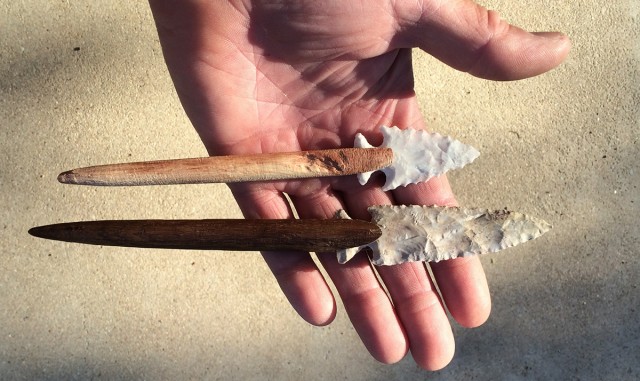 |
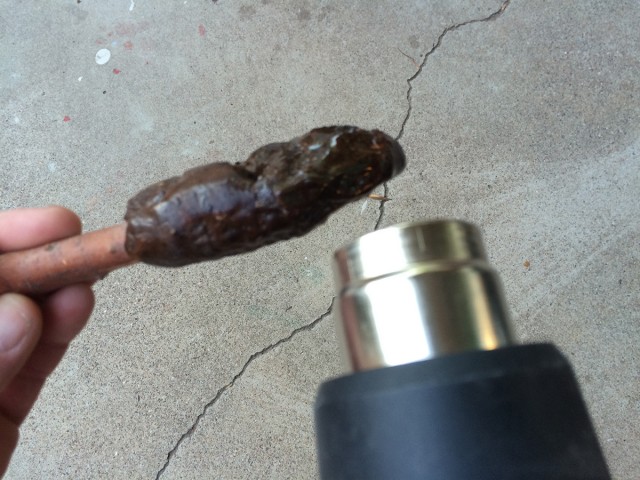 |
Heat your pitch stick and scrape some resin into the notch, then push the point into it and set it straight. (Remember, the resin will be very hot and very flammable—be careful.) You may need to reheat the pitch a couple of times as you add more to even it out around the place where the point and wood are in contact.
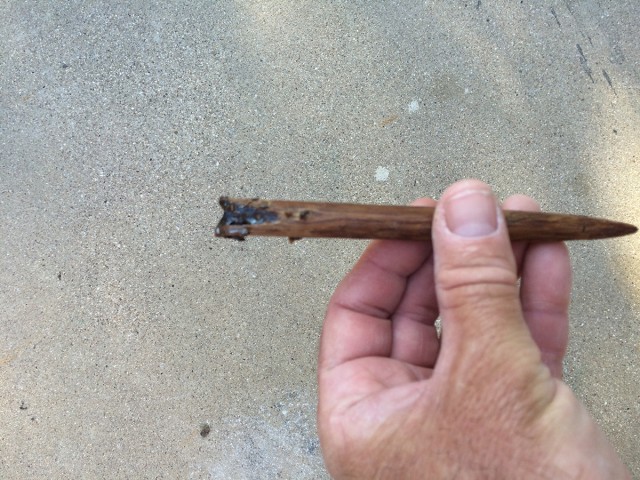 |
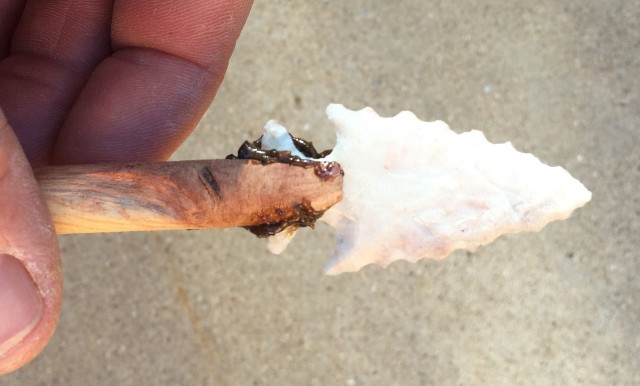 |
2:
The sinew I use in this demonstration is from an elk. It is a leg tendon that I removed from the leg and let dry. It is incredibly hard after it has dried; I pounded it between a rock and log to soften it up. Then you should be able to pull out strands, like thread. Put these strands of tendon into water; once rehydrated, they are ready to be used.
When you begin wrapping the sinew around the foreshaft, make sure you wrap it into itself: it will self-adhere and dry as a solid mass. If the point you are hafting is notched, make sure you wrap around the insides of the notches. As the sinew dries, it will shrink and become very tight.
The foreshafts are ready to use now, but I like to put a thin layer of pitch over the sinew to waterproof it.
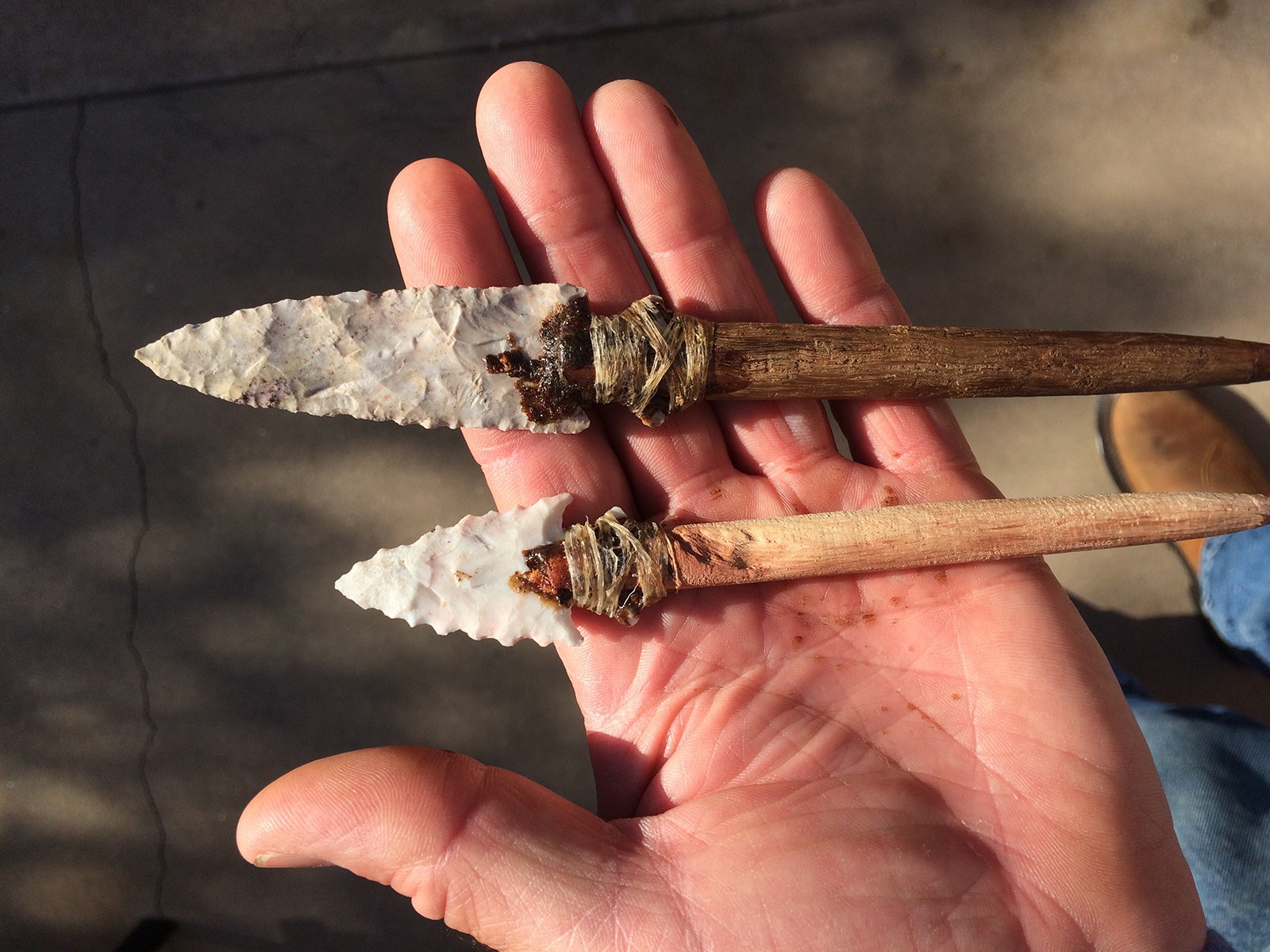 |
3:
These two projectile points are made of stone from the Santa Cruz River in Tucson. The point on the left resembles a San Pedro point, and the one on the right, a Cienega point; both would have been used with the atlatl.
Want to learn more? Join Allen for a Hands-On Archaeology class this fall. more >>
2 thoughts on “Hands-On Archaeology: How to Haft a Point into a Foreshaft”
Comments are closed.

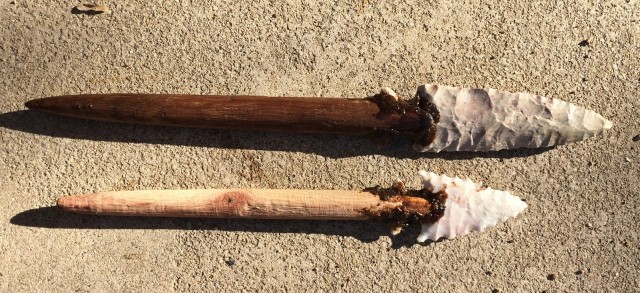
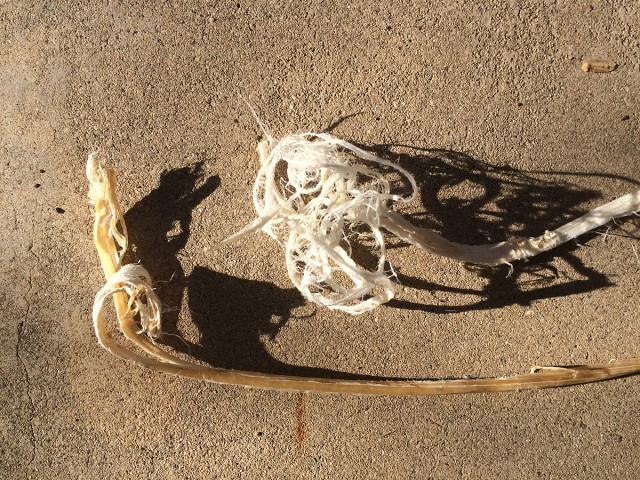
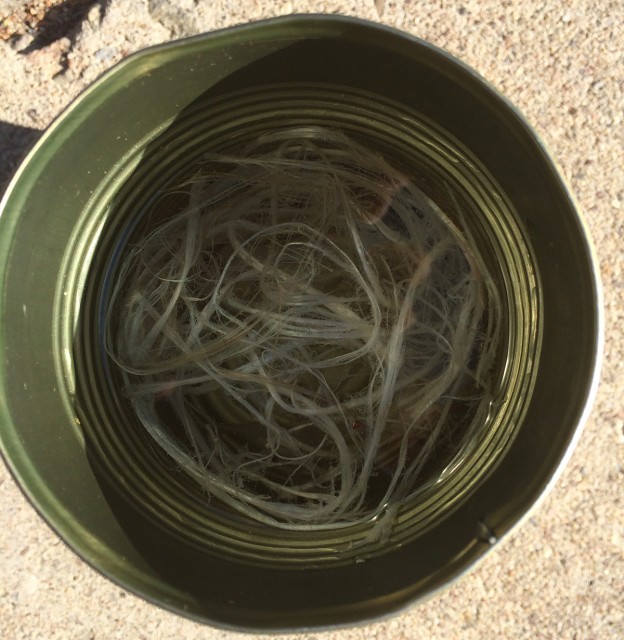
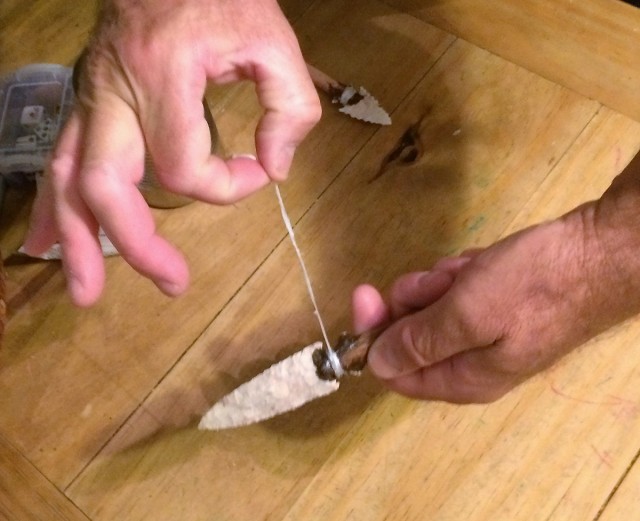
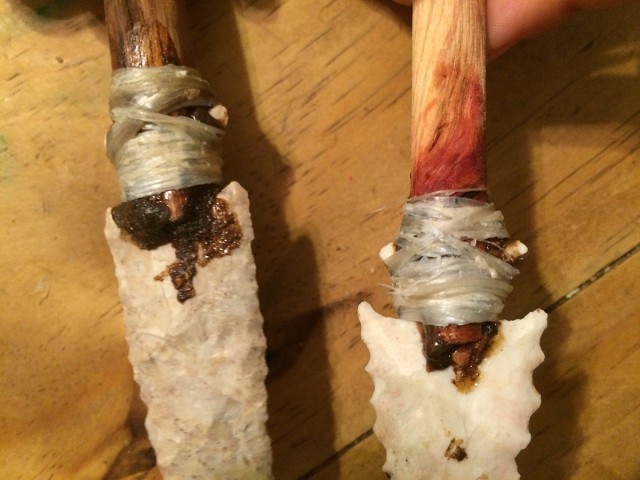
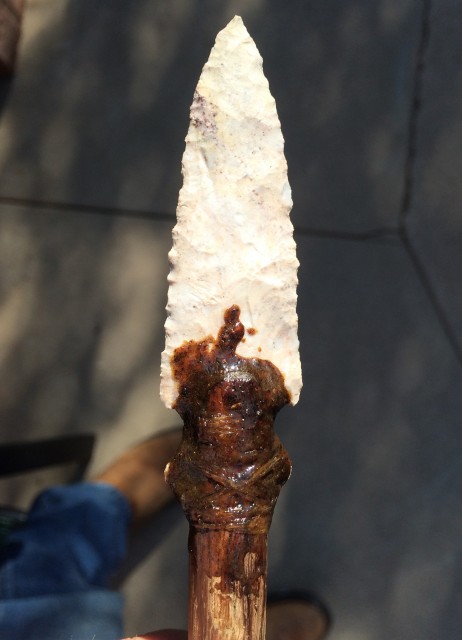
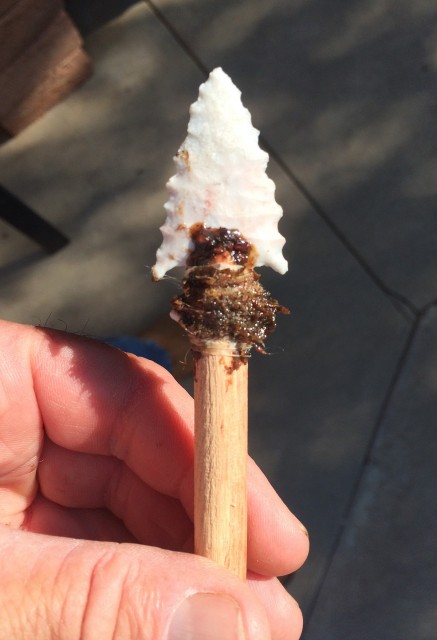
using real sinew for hafting
I don’t have nice long strands of sinew….just strands that are 3″ or 4″. I want to haft a bone blade to a shaft with pitch-glue and the sinew. When wrapping the pieces of sinew around and around, do I put pitch-glue under and over the sinew, overlapping the strands well, or do I have to make cordage from the sinew strands to make where they join strong ?